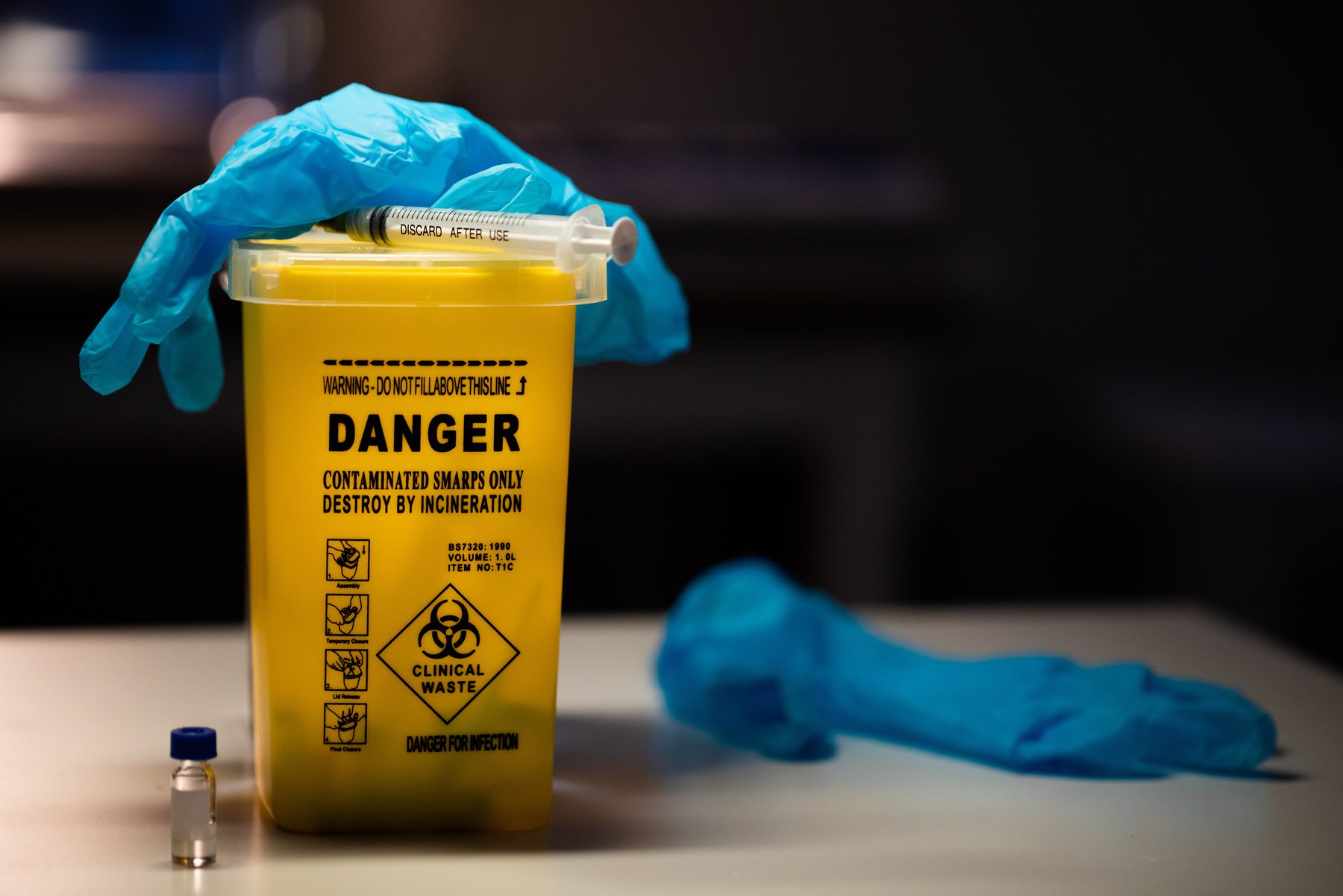
Biological waste disposal guidelines refer to the procedures that biological waste generators must follow to dispose of contaminated materials safely. Any waste materials from biological sources, that is, living organisms, including humans, animals, and plants, or their byproducts from medical and biological research and activities, must be safely handled, contained, transported, and disposed of properly following specified procedures. These wastes may hold infectious, hazardous, or radioactive properties that have the potential to pose serious health and environmental risks to populations and the environment.
Understanding Biological Waste Disposal Guidelines
Biological waste disposal guidelines are crucial to prevent the spread of infectious diseases, protect public health, protect the environment, and minimize the risks of regulatory liability to the companies, businesses, labs, hospitals, medical research facilities, and institutions from where they are generated. The guidelines are also in place to protect and instruct employees, related personnel, and disposal service providers on properly handling, storing, and transporting the waste material for disposal.
Types of Biological Waste
Types of biological waste, also known as bio-waste or biomedical waste, are rather lengthy and include the obvious, such as various kinds of human waste like blood, saliva, tissue samples, urine, and feces generated from various healthcare facilities for testing, diagnosing, and treating patients with diseases. This would also include the sharps and other instruments used for drawing and handling human waste—syringes, needles, scalpels, tissue culture flasks, etc. Another type of common bio-waste that can pose health risks due to the potential presence of pathogens is that produced by animals at veterinary clinics or research laboratories where animals are treated, studied, or housed.
Less common examples of biological waste are those generated during research, testing, or production in laboratories—the cultures, stocks, and specimens of infectious agents and items like Petri dishes and pipettes contaminated with biological materials; unused or expired biological products like expired vaccines or discarded human or animal tissues; pathological waste containing human or animal body parts, tissues, or organs removed during surgery, autopsy, or other medical procedures; radioactive wastes from cancer therapies, nuclear medicine treatments, and pathological wastes contaminated with radioactive isotopes; and biotechnology waste generated from biotechnological research and applications that may contain bio-hazardous genetically modified organisms (GMOs) and other materials.
Biological Waste Regulations
Federal, state, and local agencies and authorities administer and enforce biological waste regulations. For example, though the EPA does not administer any biomedical waste management rules, the US DOT (Department of Transportation), OHSA (Occupational Health and Safety Administration), and the CDC (Center for Disease Control) all have issued rules and regulations that define and specify proper handling, packaging, and transportation of biomedical waste for disposal. Additionally, states have rules and regulations that must be followed. In Maine, the state Board of Environmental Protection regulates the handling and disposal of biomedical waste.
Due to the potential hazards associated with biological waste, their proper management, treatment, and disposal are vital to minimize risks to human health and the environment. Though biological waste disposal guidelines may vary depending on the type of biological waste generated and regulatory agency, be it national, state, or local, guidelines ensure that generators follow specific regulations. Failure to follow guidelines or attempts to work around them is dangerous. It can result in heavy fines far exceeding the annual costs of properly managing and disposing of biological waste. By following established guidelines, bio-waste can be disposed of easily, efficiently, and legally.
Disposal of Biological Waste
General procedures for proper disposal of biological waste would typically cover aspects such as segregation, packaging, handling, treatment, transportation, and final disposal methods to prevent the spread of infections and protect the well-being of waste handlers, healthcare workers, and the general public.
Segregation
Segregation ensures the separation of biological waste from other types of waste at the point of generation. It should be placed in dedicated containers clearly labeled biological waste to prevent cross-contamination. Containers should be labeled with the properly-recognized biohazard symbol to identify potentially hazardous materials. In particular, sharps—needles, syringes, lancets, scalpels and so forth—should be placed in clearly labeled, easily accessible, puncture-resistant containers to be collected for proper disposal.
Training
Handlers of bio-waste should receive adequate training on proper waste disposal procedures, safety measures, and the correct use of PPE (Personal Protective Equipment). Personnel should use appropriate gloves, lab coats, masks, goggles, etc., when handling biological waste to protect themselves and others from potential pathogens. Surfaces and equipment that come into contact with biological waste should be disinfected and decontaminated to prevent the spread of infectious agents and to maintain a safe working environment.
Sterilization
Some bio-waste materials can be treated via autoclaving—steam sterilization that effectively kills bacteria, viruses, and other microorganisms before disposal—or through chemical disinfection. Regarding the latter, liquid bio-waste can be either bleached or autoclaved to deactivate and neutralize the hazardous properties for proper disposal. Another treatment method is incineration, which can be used to dispose of certain biological waste, such as pathological waste and contaminated animal carcasses.
Lastly, transportation and final disposal of biological wastes are subject to regulations by several federal, state, and local agencies. Generators are legally responsible for correctly packaging and labeling biological waste materials and, with the necessary documentation, for transporting the material. All containers must be properly sealed and labeled for transportation. Labeling requirements must be adhered to when transporting hazardous material. Appropriate labels, placards, and stickers should be placed where they can be easily read on the various types of containers.
Contact the Hazardous Waste Experts at Maine Labpack
Maine Labpack is a leading biological waste management company in New England. Our experienced team is certified in the unique biomedical waste disposal requirements, and we work with hospitals and healthcare offices to safely and legally remove and dispose of sharps used at their facilities. Ensure that your facility safely removes and disposes of biomedical waste like sharps. To learn more about our biomedical waste services or discuss how we can help you safely dispose of your sharps, don’t hesitate to contact us today.
